When the university opened its doors to students in the fall of 1868, it had no library building. That would remain the case for 23 years, while library collections found temporary homes in campus buildings until the University Library (now known as Uris Library) opened in 1891. Researchers discovered materials through a process that involved physically consulting reference books and card catalog drawers before even considering how they might actually read the titles they had identified. In the 1970s and early 1980s, the Library offered several fee-based, mediated electronic searching options, and later, collections of databases on CD-ROMs. But the biggest change for Cornell researchers came in 1988, with the introduction of the Cornell Library Online Catalog. In the following decade, the Internet made possible access to electronic journals, networked databases, and all of today’s essential research tools.
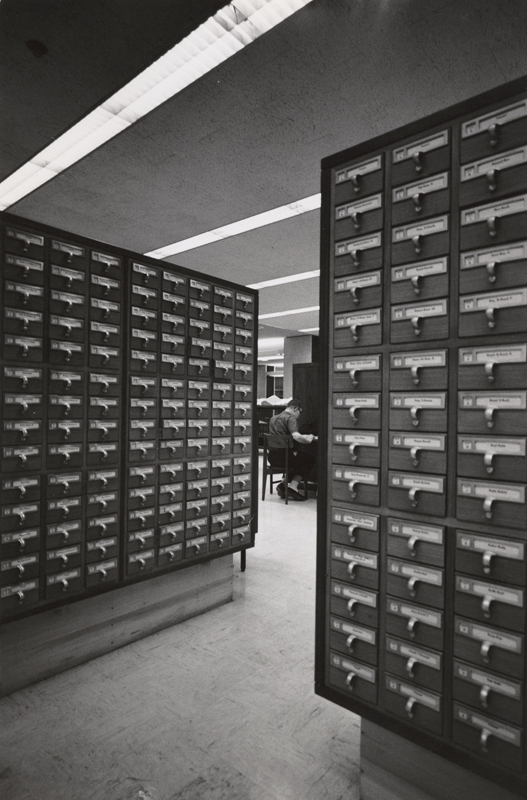
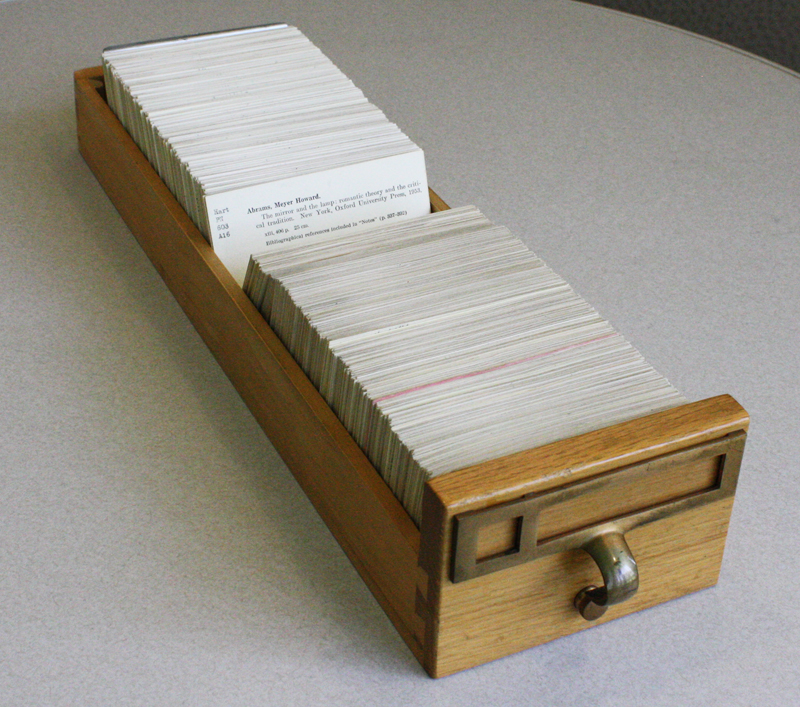
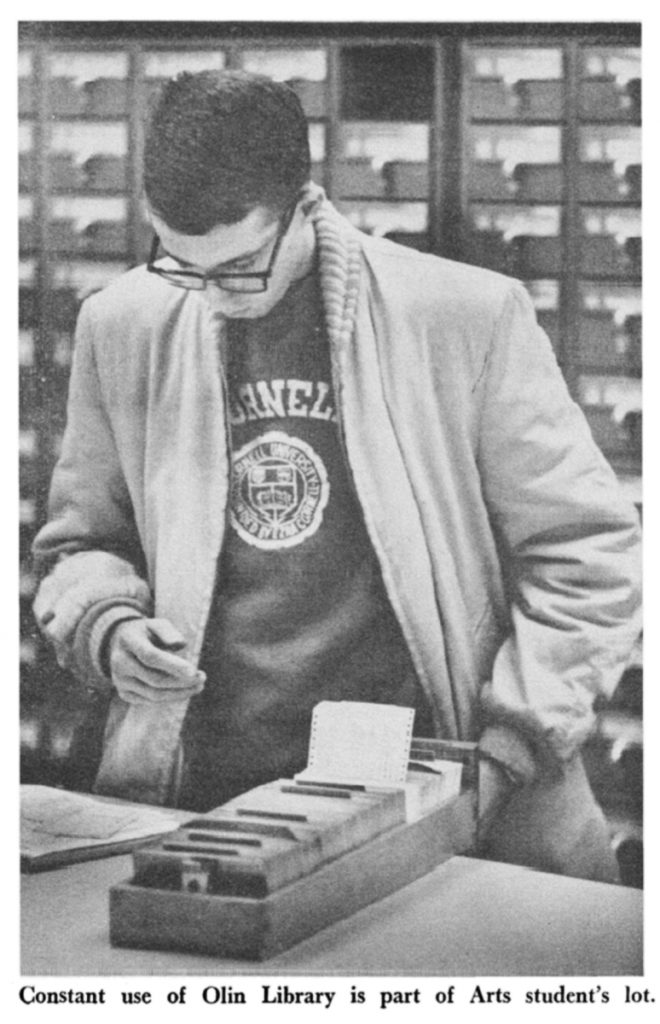
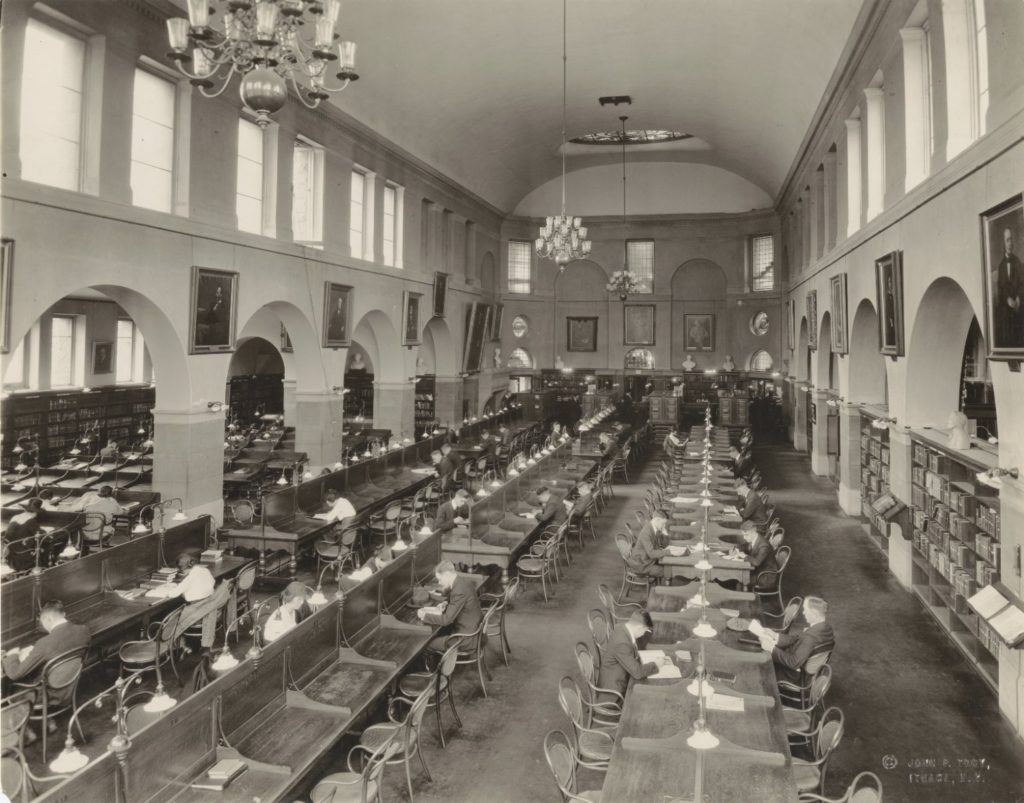
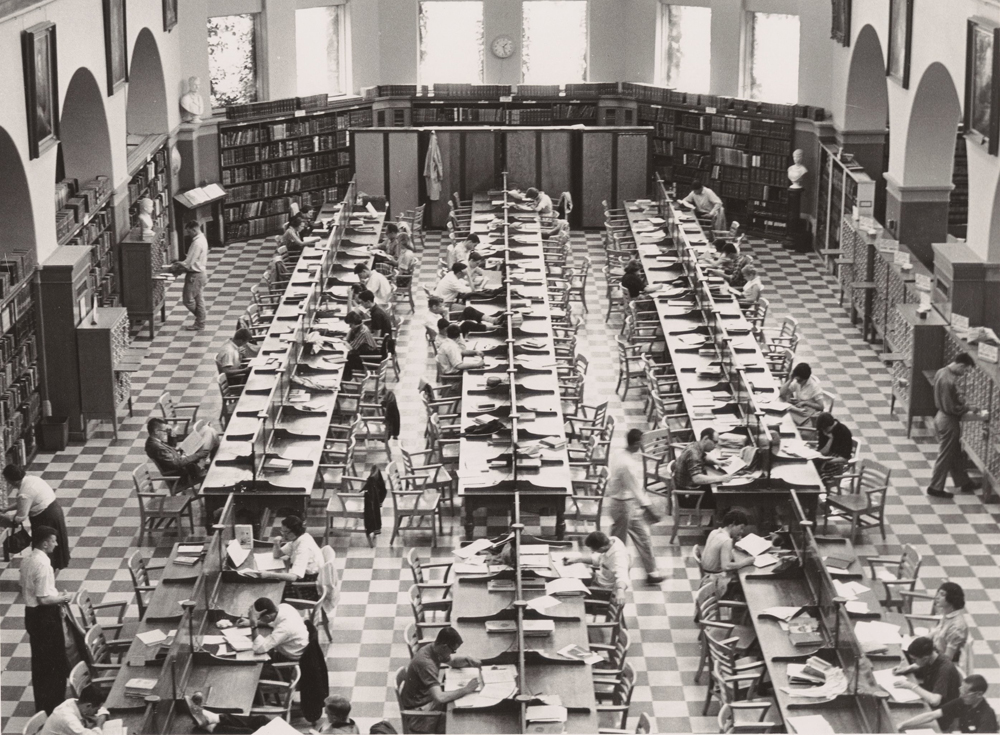
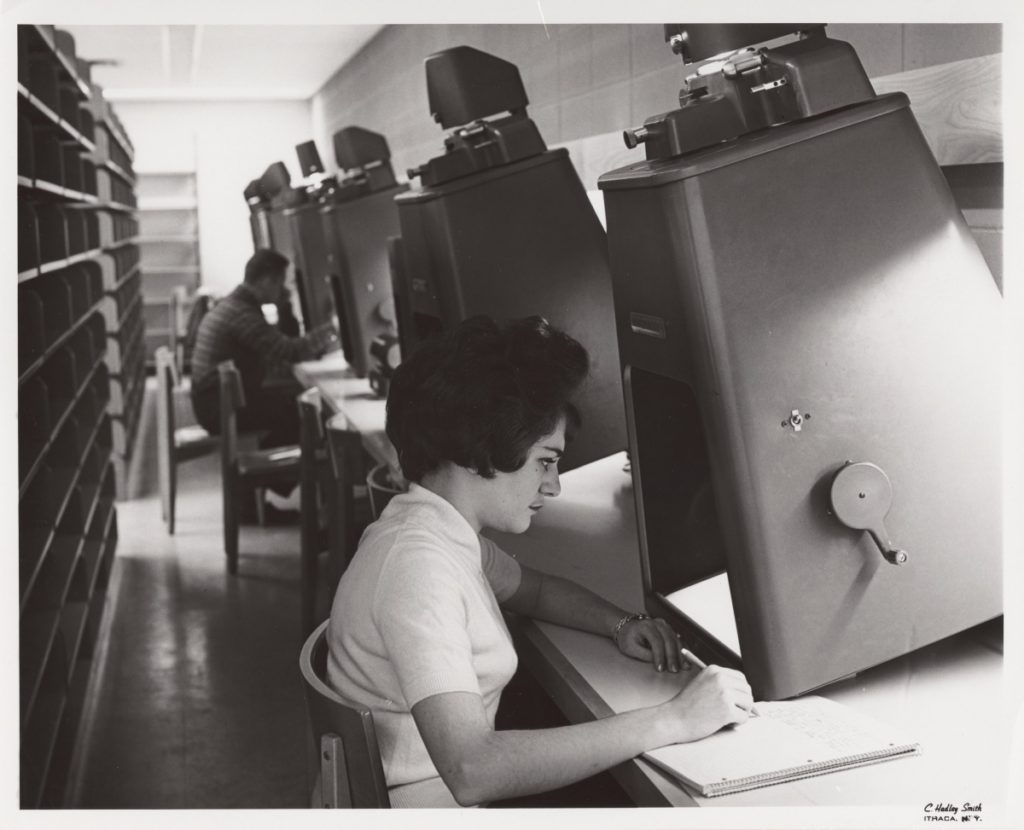
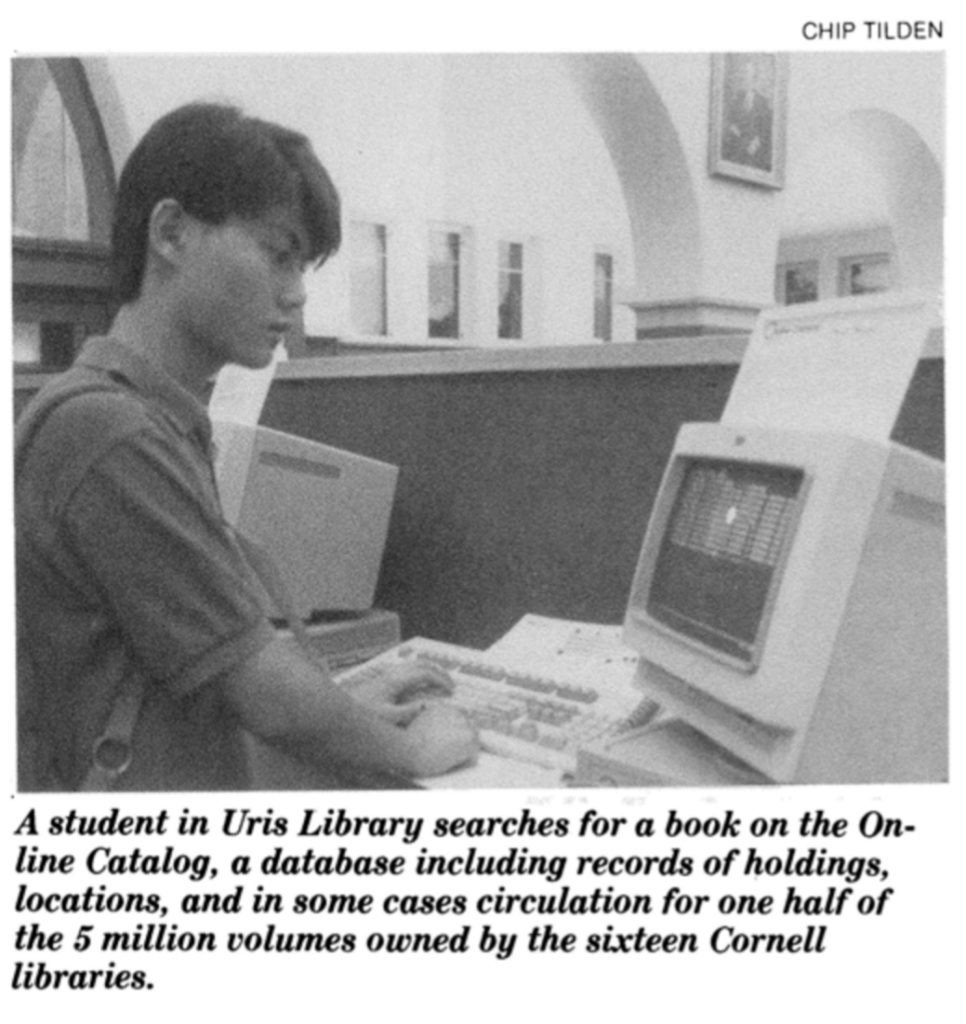
The space now occupied by Olin’s computer workstations, from the striped “Tiger Alley” hallway to the south wall, once held more than 6,500 drawers filled with cards for items held by each of Cornell’s campus libraries. Before online catalogs allowed for keyword searching, researchers had to make do with author, title and subject heading searches in the physical card catalog. Card catalogs lined the sides of the Dean Room, the main reading room space of what was known (in 1960, when the photo above was taken) as the undergraduate library. Microfilm searching, frame by frame, was a fact of life for most students in 1960, when the student pictured above was photographed researching in Olin Library. And in 1989, the online catalog arrived, as the Alumni News reported: “A student in Uris Library searches for a book on the Online Catalog, a database including records of holdings, locations, and in some cases circulation for one half of the 5 million volumes owned by he sixteen Cornell libraries.”